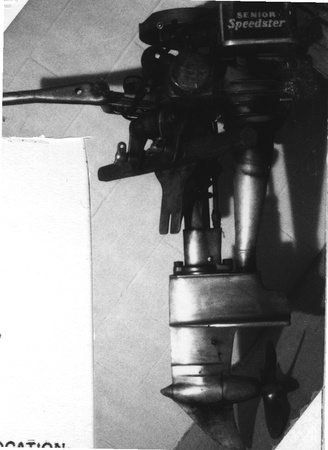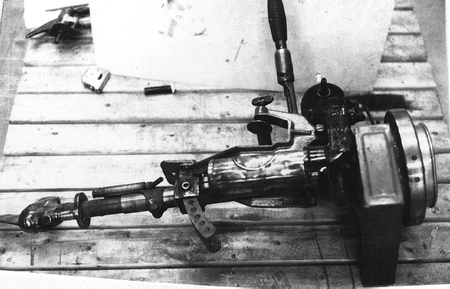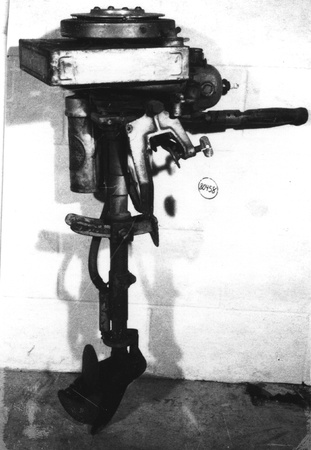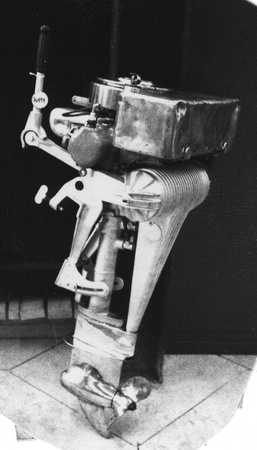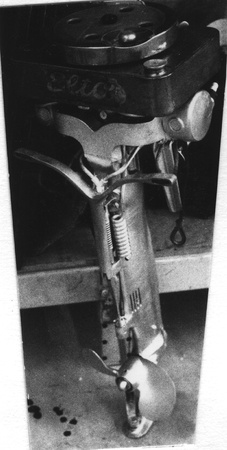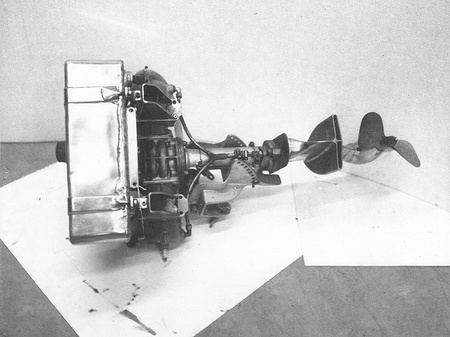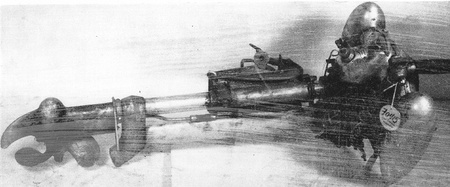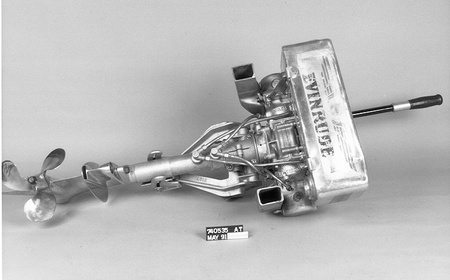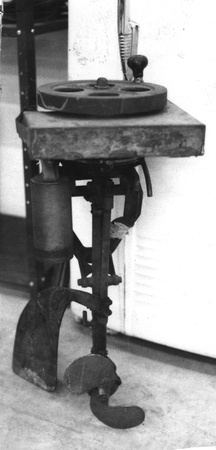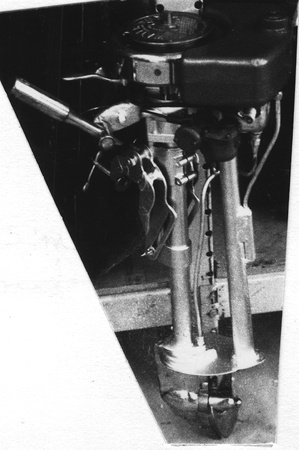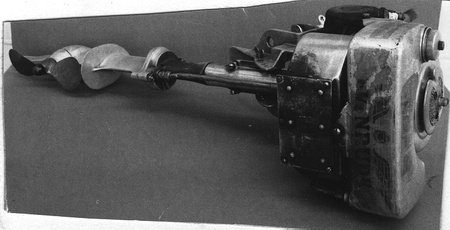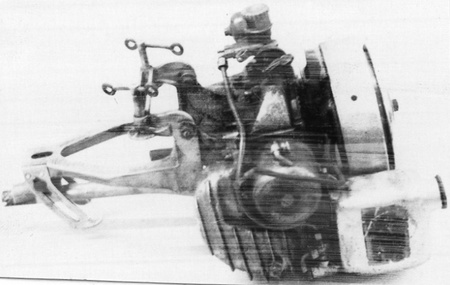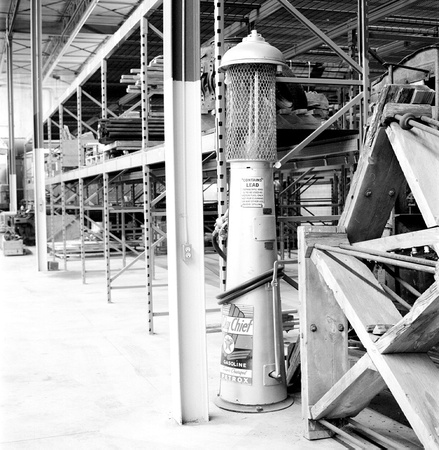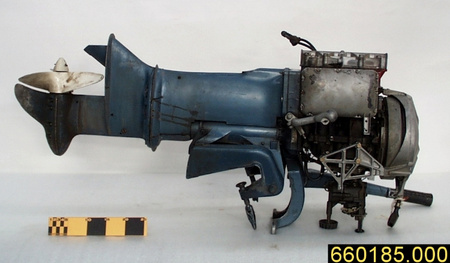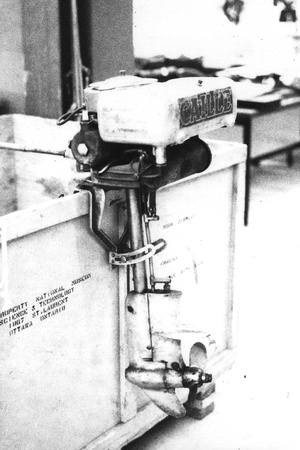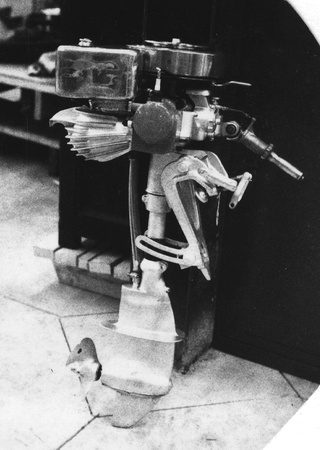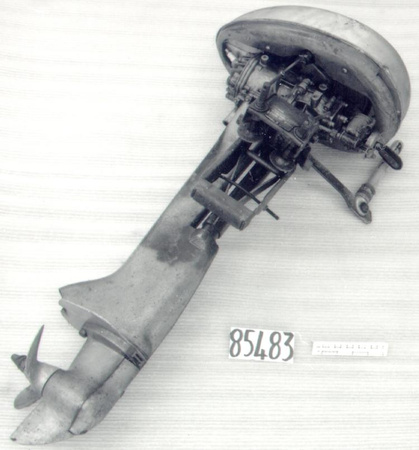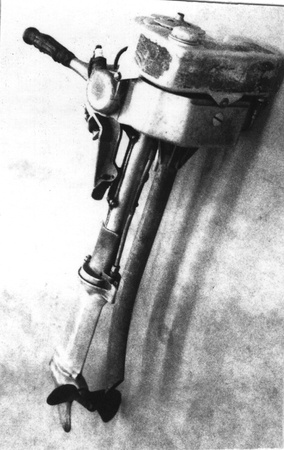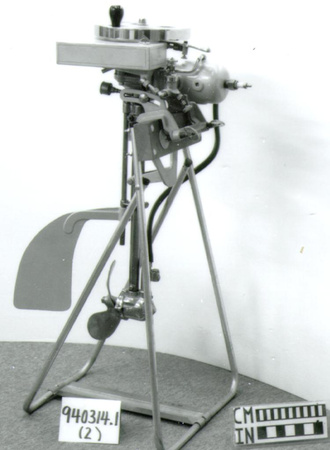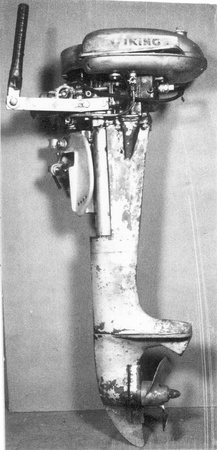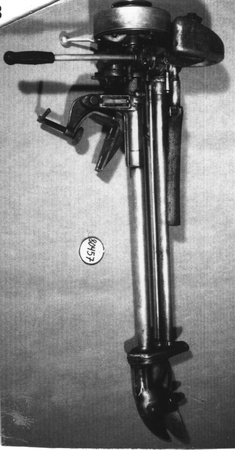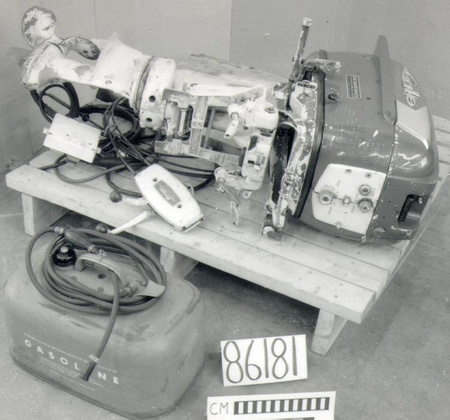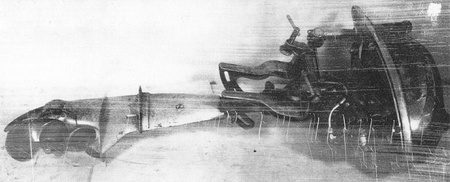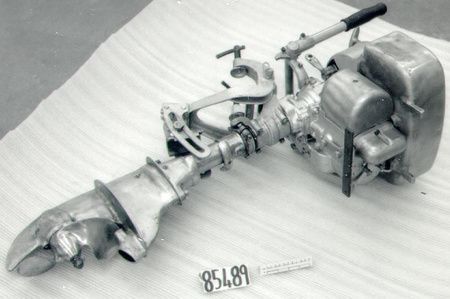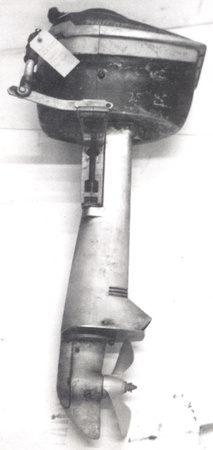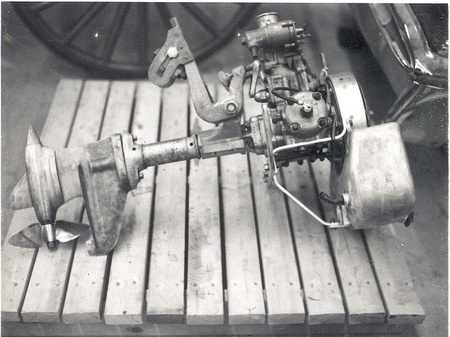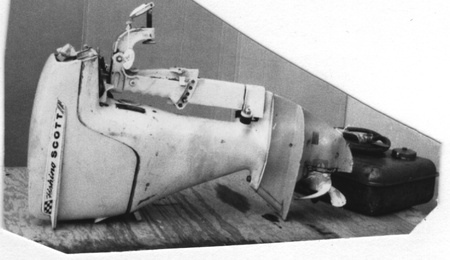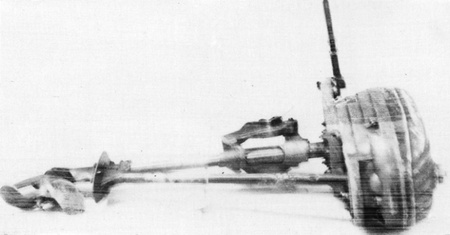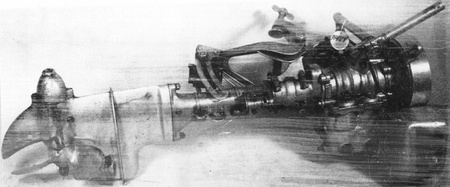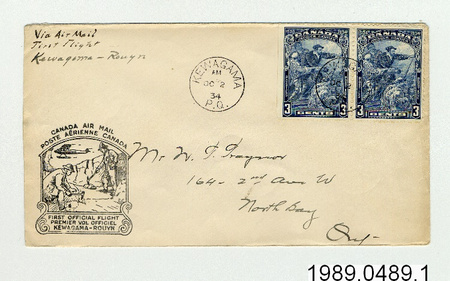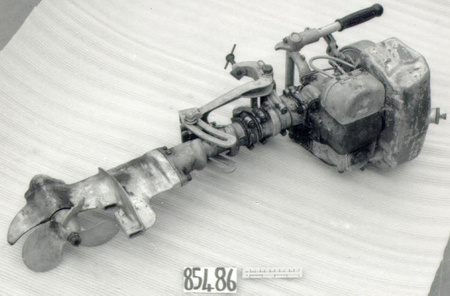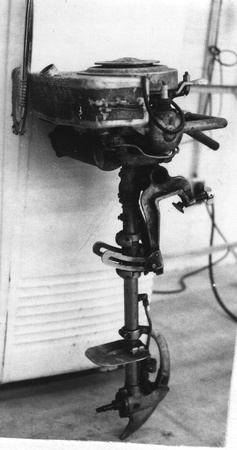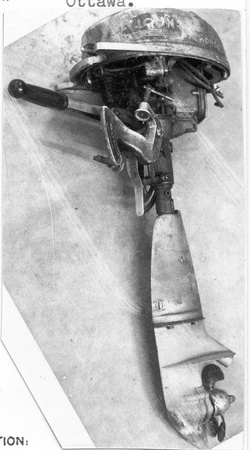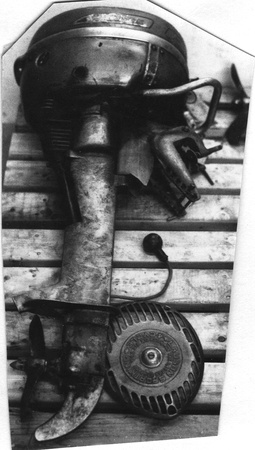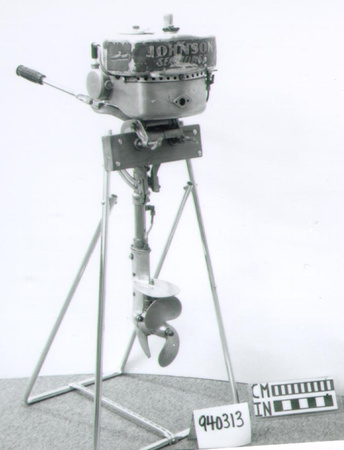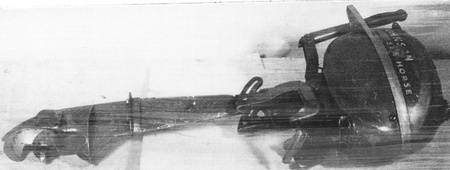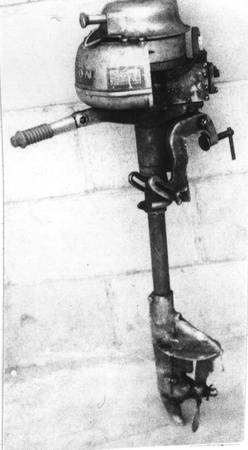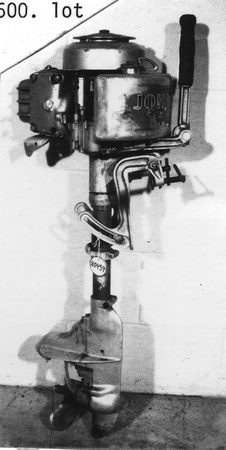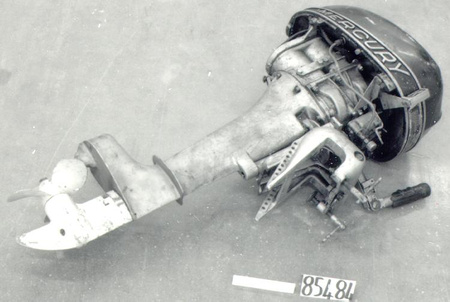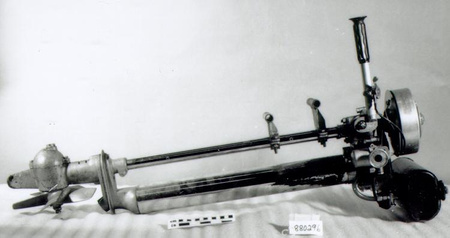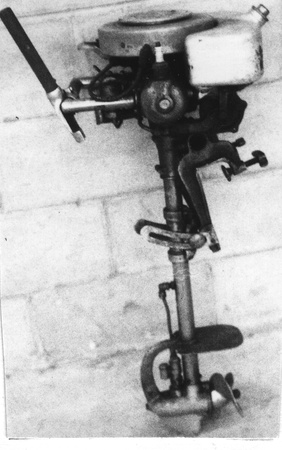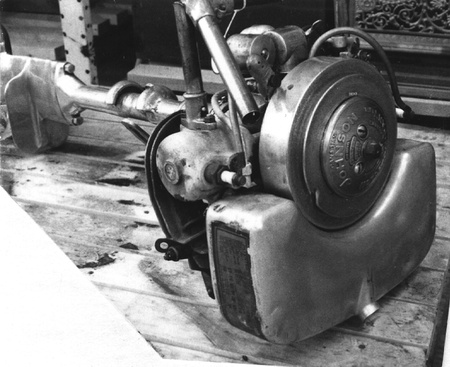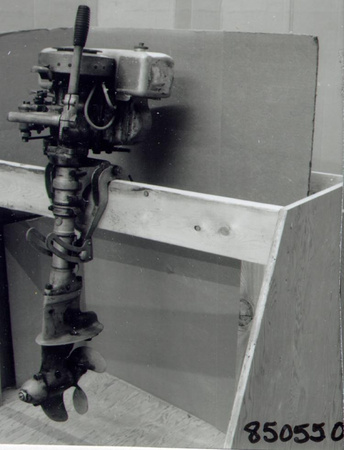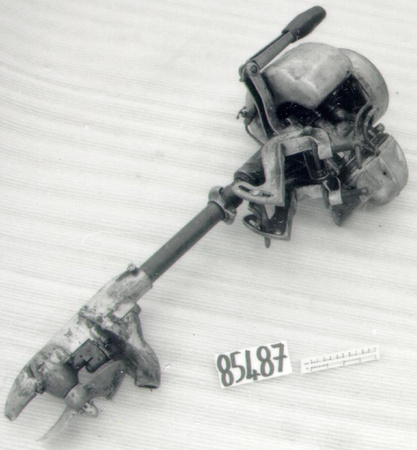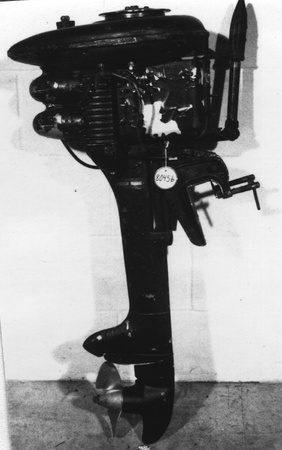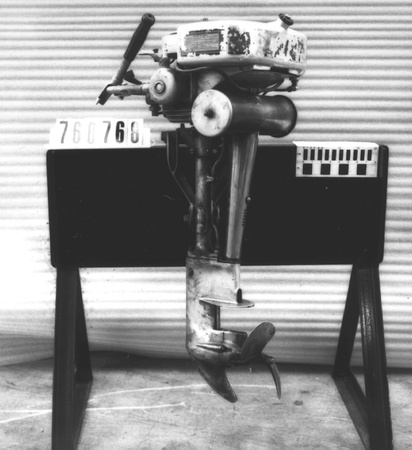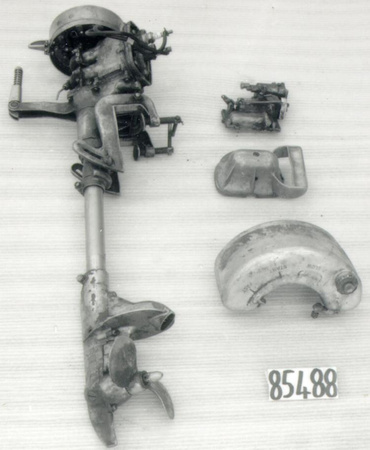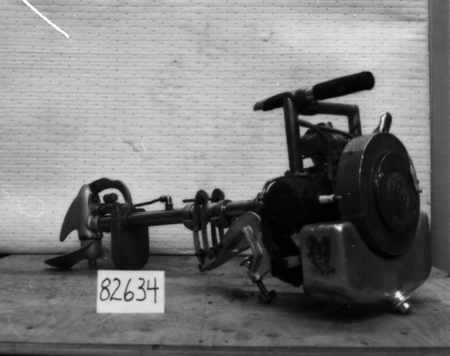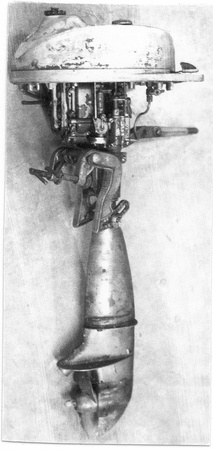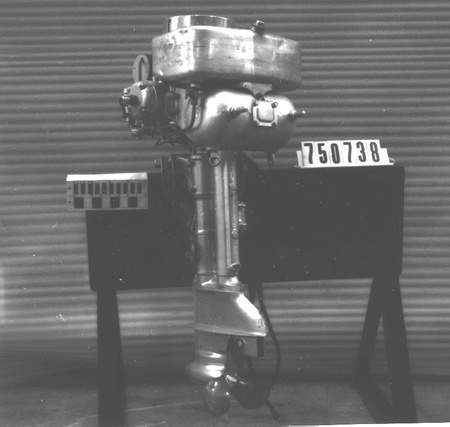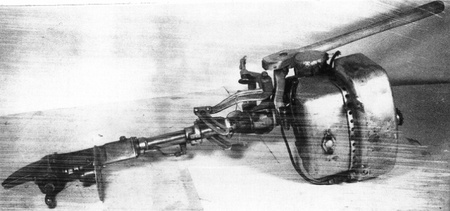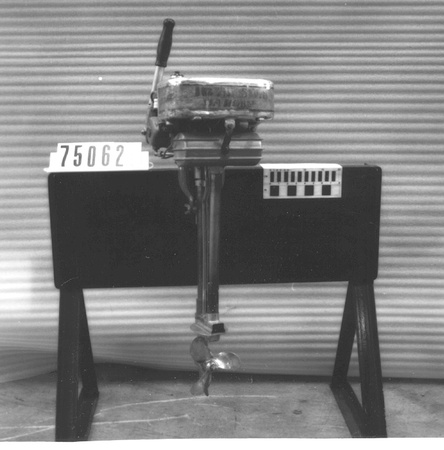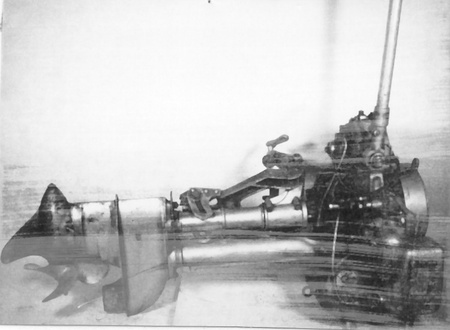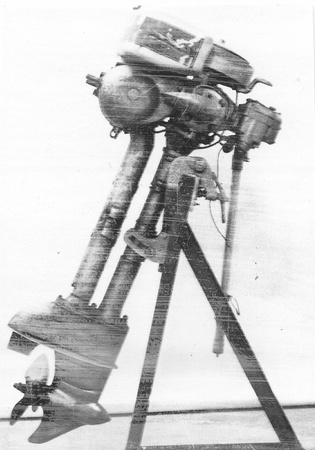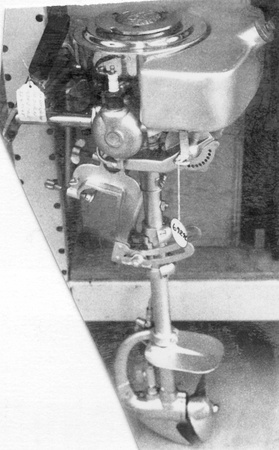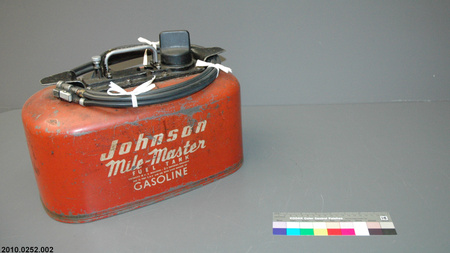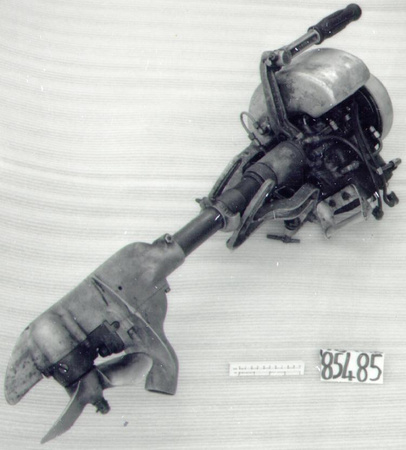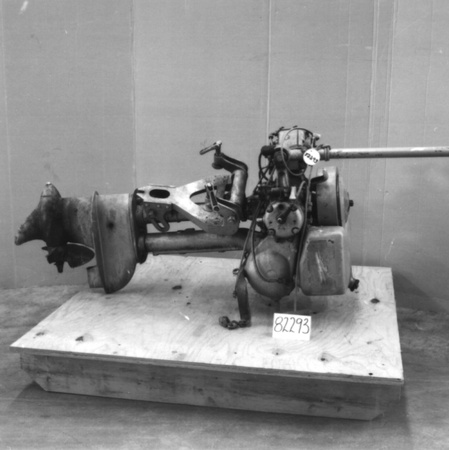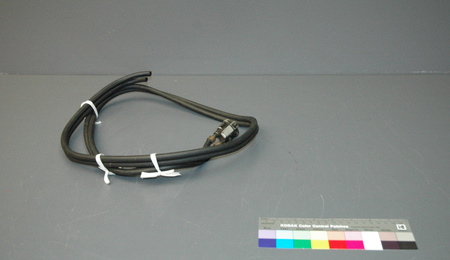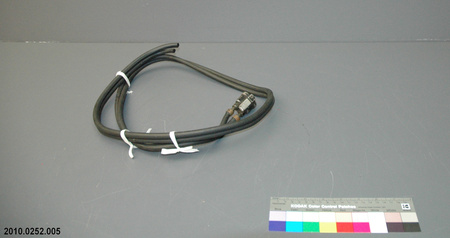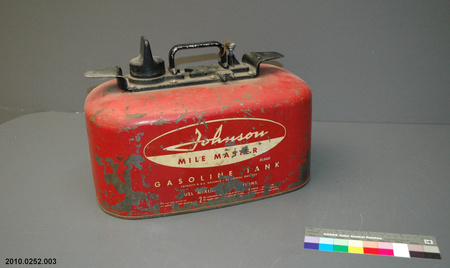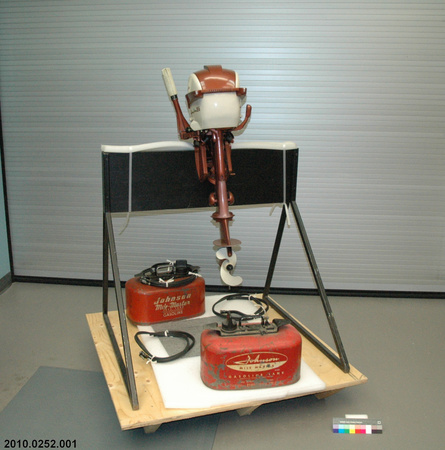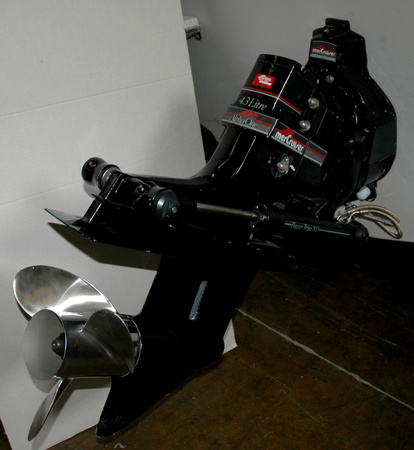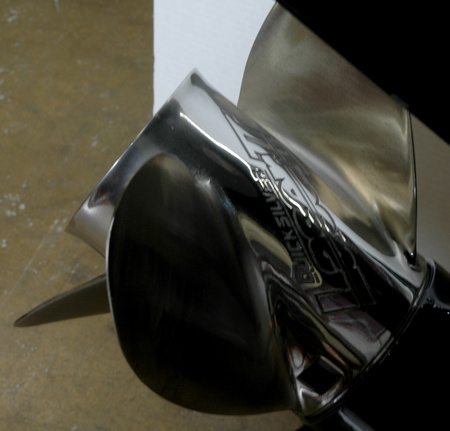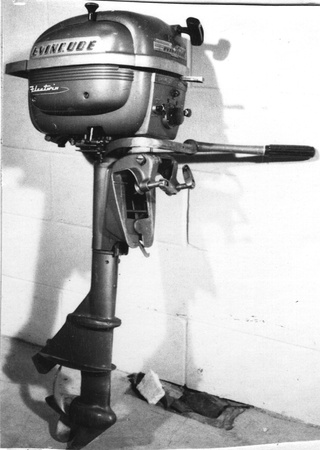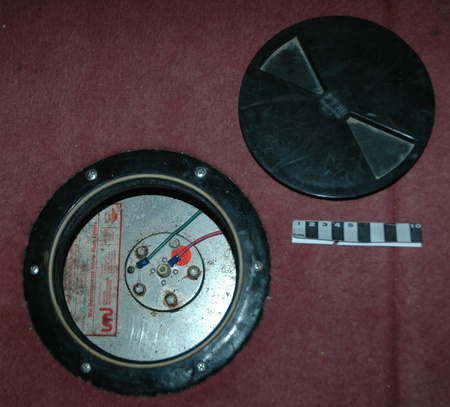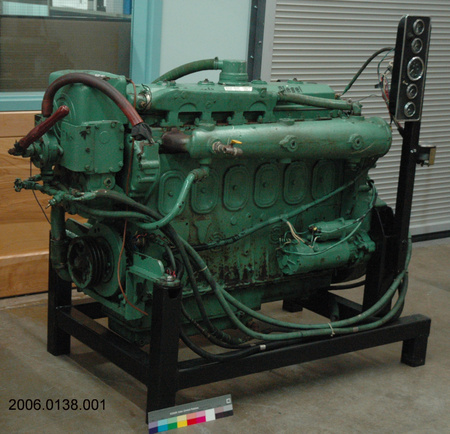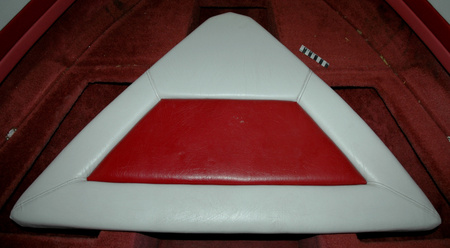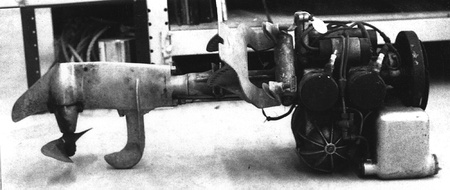Outboard motor
Use this image
Can I reuse this image without permission? Yes
Object images on the Ingenium Collection’s portal have the following Creative Commons license:
Copyright Ingenium / CC BY-NC-ND (Attribution-NonCommercial 4.0 International (CC BY-NC 4.0)
ATTRIBUTE THIS IMAGE
Ingenium,
1978.0572.001
Permalink:
Ingenium is releasing this image under the Creative Commons licensing framework, and encourages downloading and reuse for non-commercial purposes. Please acknowledge Ingenium and cite the artifact number.
DOWNLOAD IMAGEPURCHASE THIS IMAGE
This image is free for non-commercial use.
For commercial use, please consult our Reproduction Fees and contact us to purchase the image.
- OBJECT TYPE
- 4 CYL/2 CYC/35 HP
- DATE
- 1931
- ARTIFACT NUMBER
- 1978.0572.001
- MANUFACTURER
- ELTO OUTBOARD MOTOR CO.
- MODEL
- SUPER ELTO
- LOCATION
- Milwaukee, Wisconsin, United States of America
More Information
General Information
- Serial #
- 70854
- Part Number
- 1
- Total Parts
- 1
- AKA
- N/A
- Patents
- N/A
- General Description
- ALUINUM, CAST IRON
Dimensions
Note: These reflect the general size for storage and are not necessarily representative of the object's true dimensions.
- Length
- 112.0 cm
- Width
- 35.5 cm
- Height
- 43.0 cm
- Thickness
- N/A
- Weight
- N/A
- Diameter
- N/A
- Volume
- N/A
Lexicon
- Group
- Marine Transportation
- Category
- Motive power
- Sub-Category
- N/A
Manufacturer
- AKA
- ELTO
- Country
- United States of America
- State/Province
- Wisconsin
- City
- Milwaukee
Context
- Country
- Unknown
- State/Province
- Unknown
- Period
- Unknown
- Canada
-
Ole Evinrude started ELTO or the Elto Outboard Motor Company (an acronym for “Evinrude Light Twin Outboard”) in 1917. On May 8th, 1928, Canadian Johnson Motor Company Limited established its own location in Peterborough, Ontario. In 1935 the company merged with Evinrude and Elto to form Outboard Marine Corporation (OMC). The Elto name was resurrected in 1949 for the Gale products and although quickly dropped in the US, enjoyed life through the 1958 models in Canada. By the late 1950s, around 45% of Peterborough’s production was exported to New Zealand, Venezuela, Hong Kong, England, South Africa, Australia, Belgium, and Nassau. This was done by providing stable employment for over 1200 people at their facility. By 1959, it had expanded to over 400,000 square feet and provided employment to 1,600 people. The company changed its name to Outboard, Marine & Manufacturing Co. (OMMC) Canada before it was dissolved in 1982. C.B. Clarence Neal played a significant role in the great success of OMMC. His strong leadership and new product initiatives were instrumental in establishing OMMC’s sustained dominance in the Canadian market for many years. La compagnie Ole Evinrude a formé ELTO (souvent nommée Elto Motor Compagnie qui était un acronyme de Evinrude Light Twin Hors-Bord) en 1917. Le 8 Mai, 1928 la compagnie nommée Canadian Johnson Motor Company Limited a établi sa propre usine à Peterborough. En 1935 la compagnie a fait une fusion d'entreprises avec Evinrude pour former Outboard Marine Corporation (OMC). La marque ELTO a fait un retour en 1949 pour les produits vendus par Gale, mais a été rapidement discontinué aux États-Unis malgré son succès au Canada jusqu'à 1958. Rendu à la fin des années 1950 presque 45 % de la production de l'usine à Peterborough était exporté à plusieurs endroits au monde. Plus de 1200 personnes travaillaient pour exporter des moteurs hors-bord à des pays comme la Nouvelle Zélande, l'Australie, l'Afrique du sud, l'Angleterre, le Venezuela, la Belgique, le Hong Kong et aussi le Nassau. Rendu en 1959 la compagnie avait grossit a plus de 1600 employées avec une usine qui a augmenté jusqu'à 400,000 pieds carrés. La compagnie a changé son nom a Outboard, Marine & Manufacturing Co. (OMMC) Canada avant de fermer ces portes en 1982. C.B. Clarence Neal a grandement contribué au succès du OMMC avec ses initiatives pour la publicité de nouveaux produits ainsi que son leadership. Ces qualités ont permis à OMMC de dominer le marché canadien pour plusieurs années. - Function
-
This artifact functions as a small internal combustion 4-cylinder 35 Horsepower engine. This artifact can be attached to the stern of a small boat. Cet artefact est conçu pour être attaché à la poupe d'un petit bateau. L'objet est un moteur à combustible qui a quatre cylindres avec une Puissance de 35. - Technical
-
Evinrude’s prototype motor had some key features that have been replicated in almost every outboard motor since; the engine was mounted on a bracket that could be clamped to the back of a boat, allowing it to swivel and provide steering. In outboard engines, fuel and air are burned in a closed space, known as the cylinder; this burning process generates hot gasses that try to expand. The only way for the hot gasses to expand is by pushing the piston downward; the piston is connected to a rod, which is linked to the crankshaft. The crankshaft converts the piston’s downward motion into a rotating motion of the shaft. Two-stroke engines are known for their simplicity and affordability. They are lightweight and compact, but oil is mixed with the fuel to lubricate the internal parts and during the combustion process. Some of the fuel mixture from that process escapes with the exhaust, resulting in wasted fuel making them less fuel-efficient and also noisier as well as posing risks in the form of water pollution. Le prototype de Evinrude avait plusieurs options qui étaient si révolutionnaires qu'ils sont devenus le standard aujourd'hui comme le montage du moteur à l'arrière du bateau avec un support. Cette innovation a fait en sorte que le moteur pouvait pivoter et à effectivement améliorer le système de direction du bateau. Des moteurs hors-bord brule du carburant avec de l'air dans un cylindre. Ce processus va générer des gazes réchauffées qui essayent d'agrandir. La seule façon pour l'expansion des gazes dans un environnement restreinte est de pousser le piston vers le bas. Ce piston est connecté à une tige qui est liée à un arbre moteur. L'arbre moteur converti la mobilité descendante du piston a une motion de rotation. Les moteurs à deux-temps sont connus pour leur simplicité et leur faible prix. Y sont légers et compactes mais l'huile est mélangée avec le carburant pour lubrifier les composantes à l'interne du moteur. Ceci fait en sorte que le mélange va s'échapper pendant le processus de combustion et les rendre moins efficace et plus bruyant en plus de polluer nos eaux. - Area Notes
-
Unknown
Details
- Markings
- MFR'S PLATE ON TANK
- Missing
- TILLER/ ONE COIL NOT ORIGINAL
- Finish
- Unknown
- Decoration
- N/A
CITE THIS OBJECT
If you choose to share our information about this collection object, please cite:
ELTO OUTBOARD MOTOR CO., Outboard motor, circa 1931, Artifact no. 1978.0572, Ingenium – Canada’s Museums of Science and Innovation, http://collection.ingenium.ca/en/id/1978.0572.001/
FEEDBACK
Submit a question or comment about this artifact.
More Like This
